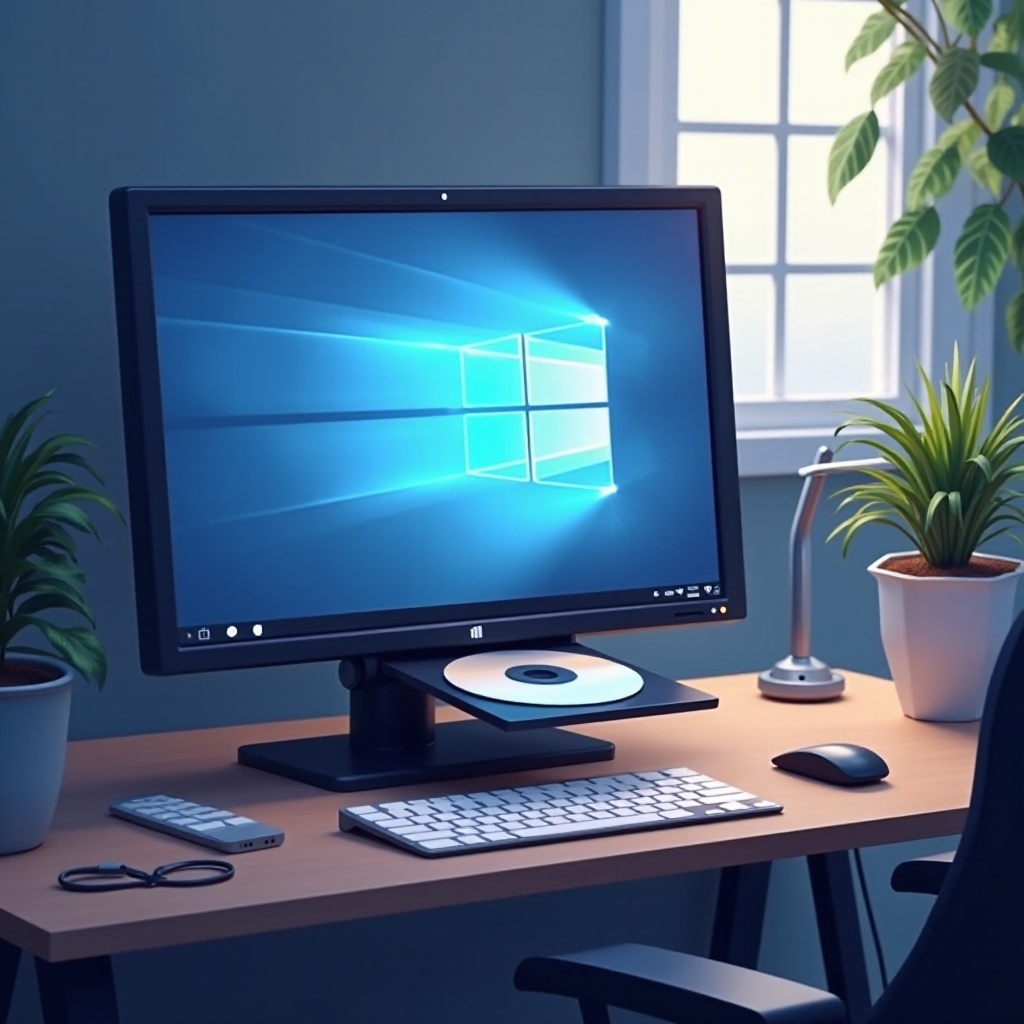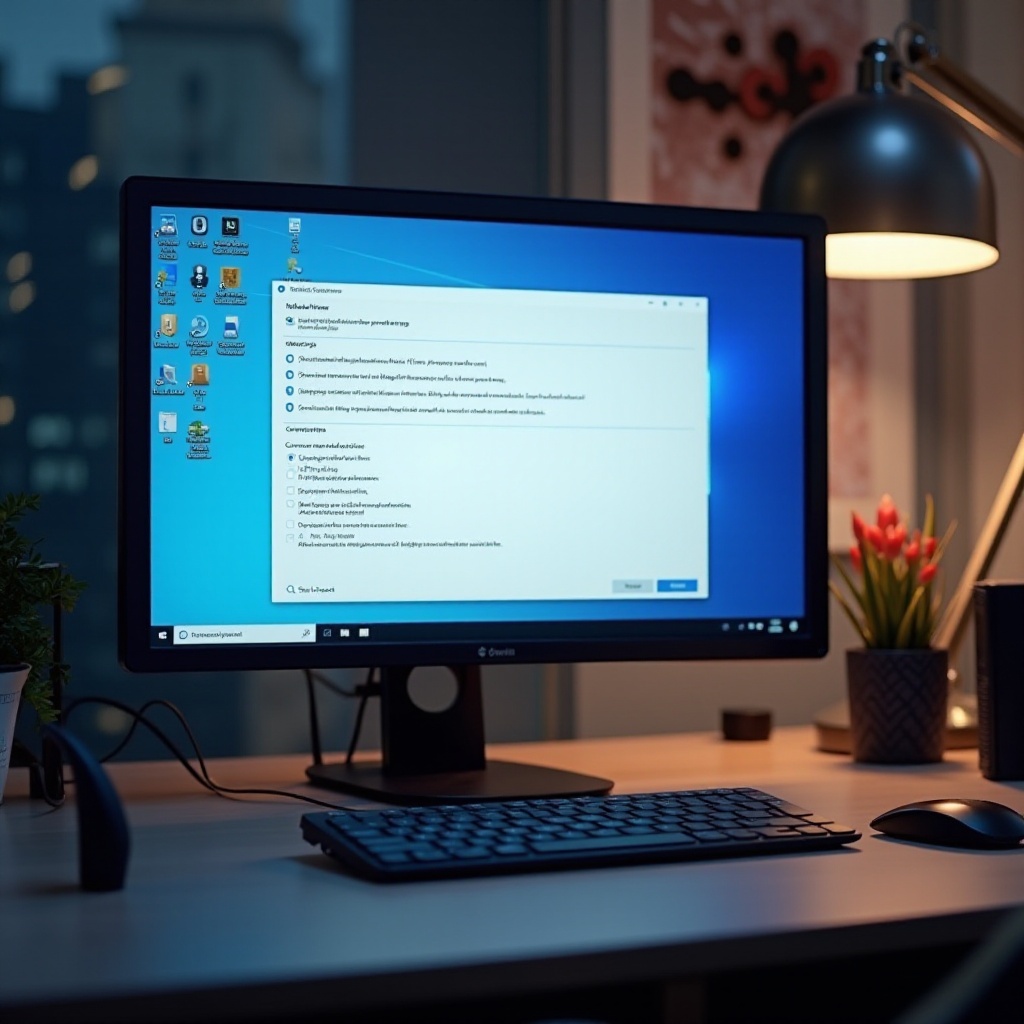Introduction
Encountering problems with a Windows 10 DVD drive not reading discs can be frustrating, especially if you rely heavily on physical media for your data storage or entertainment. The task of understanding and resolving this issue might seem daunting, but it’s manageable with the right approach. This article provides a detailed guide to help you troubleshoot and address the issue, whether it requires a simple tweak in system settings or replacing the hardware.

Understanding the Problem
When your Windows 10 DVD drive isn’t reading discs, it can signal issues related to either software or hardware. Uncovering the root cause is crucial before implementing a solution. Software issues often stem from outdated drivers or improper system configurations, whereas hardware issues could be related to the drive itself or even the disc. By identifying whether the problem is software or hardware-related, you can apply a more targeted troubleshooting method, saving time and effort.
Initial Troubleshooting Steps
Beginning with basic troubleshooting can be effective at resolving the problem promptly. Check the disc in question for any signs of damage or dirt and clean it if necessary. Testing another disc in the drive can also help determine whether the issue is with the drive or the disc. A simple computer restart might resolve minor software glitches, allowing you to move on to deeper troubleshooting if necessary.
Checking Windows 10 Settings
If the issue persists after checking the discs, the next step is to examine your Windows 10 settings.
Using Device Manager
Go to Control Panel and access Device Manager. Under DVD/CD-ROM drives, look for warning symbols indicating a problem. Right-click the drive and choose ‘Update Driver’ to ensure you have the latest version, as outdated drivers can cause compatibility issues. If the drive is missing, select ‘Scan for hardware changes’ to re-detect it.
Updating Drivers
Updated drivers can solve many operational problems. Using the automatic update feature in Device Manager or downloading from the manufacturer’s site helps in keeping your drivers current, ensuring the system communicates effectively with the drive.

Software Solutions
If configuration tweaks and driver updates don’t fix the problem, you might need to explore software solutions.
Running Windows Troubleshooter
Navigate to Update & Security in settings and launch the Windows Troubleshooter. Select the ‘Hardware and Devices’ troubleshooter to help identify and automatically rectifying problems with the DVD drive.
Resolving Software Conflicts
Third-party programs sometimes conflict with your drive. Identifying recently installed or updated software, especially those involving virtual drives or emulation, can be beneficial. Disabling or removing them helps in testing if they are causing the issue.

Hardware Diagnostics
If software solutions do not improve the condition, you may need to conduct hardware diagnostics.
Testing Hardware Components
Ensure all connections to the DVD drive are secure, and the drive is powered. Testing the drive on a different computer also helps determine if the drive itself is defective.
Replacing the DVD Drive
Should all other options fail, consider replacing your DVD drive. Opt for either a new internal drive or a more straightforward installation with an external USB DVD drive.
Advanced Fixes
For persistent issues, advanced system fixes might be necessary.
Registry Editor Adjustments
Access the Registry Editor by typing ‘regedit’ in the Run dialog box. Navigate to HKEY_LOCAL_MACHINE\SYSTEM\CurrentControlSet\Services\atapi\Controller0. Here, create a new DWORD entry named ‘EnumDevice1’ with a value of 1, which helps Windows 10 recognize the DVD drive.
Using Command Prompt
Run Command Prompt as an administrator and use the command ‘sfc /scannow’ to start a system check. This function scans and repairs corrupted files that might be affecting the DVD drive’s performance.
Preventive Measures
To avoid future issues, engage in routine maintenance and use best practices.
Regular Maintenance
Regularly clean discs and the drive lens to prevent dirt buildup, ensuring optimal performance.
Proper Usage Care
Handle discs carefully to prevent dust and scratches, which can lead to data reading issues and potentially damage the player.
Conclusion
Tackling ‘Windows 10 DVD Drive Not Reading Discs’ can involve various steps, from checking physical media to making advanced system modifications. A disciplined approach improves the success rate of identifying and remedying the issue. Ensuring regular maintenance and proper care will help in reducing similar issues in the future.
Frequently Asked Questions
How can I tell if the DVD drive is faulty or a software issue?
Test the drive on another computer. If it functions there, it’s likely a software issue on your original computer.
Are there any specific drivers I should download for my DVD drive on Windows 10?
Always check the manufacturer’s website for updated and compatible drivers specific to your model.
Can external drives serve as a reliable alternative to an internal Windows 10 DVD drive?
Yes, external drives offer comparable performance and are easy to install, making them a reliable option.

